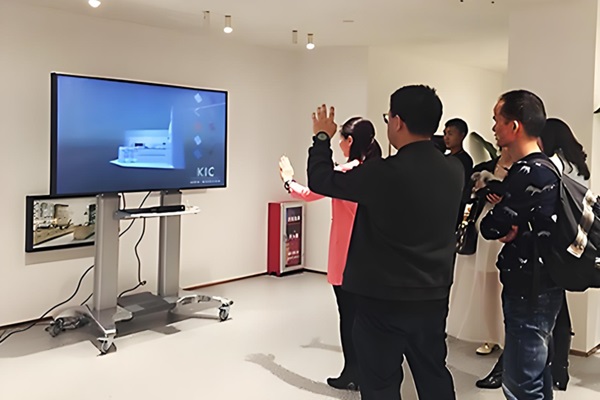There have been many notable advances in television technology in recent years, but the introduction of glasses-free 3D television is undoubtedly one of the most exciting. For years, people have been looking forward to being able to watch 3D entertainment without the need for special glasses, and now it is a reality. In this article, we’ll take a look at how glasses-free 3D television works, its benefits, and its applications.
How Glasses-Free 3D Television Works
3D television without glasses generally uses some cutting-edge technology to make it work, the two most widely used of which are lenticular lenses and parallax barriers.
1. Lenticular Lens
Lenticular lens technology is another method utilized in 3D televisions without glasses. These microscopic lenses, integrated into the screen, produce a 3D appearance and refract light so that each eye sees a different image. Instead of parallax barriers, lenticular displays offer a greater range of viewing angles, enabling a more immersive experience without forcing the spectator to take a fixed seat.
2. Parallax Barrier
The TV screen is covered with a thin layer that causes each eye to see a slightly different image. To give the impression of depth, the parallax barrier sends separate images to the viewer’s left and right eyes. The drawback is that to have the finest 3D effect, the viewer must sit in certain “sweet spots. ” However, some more recent models can detect the viewer’s gaze and modify the image accordingly.
Applications of 3D Television without Glasses Beyond Entertainment
In addition to transforming home entertainment, 3D television without glasses is also causing waves in other sectors of the economy. Autostereoscopic technology has many possible uses, from virtual reality and education to medical imaging and commercial creation.
 Education: Glasses-free 3D displays in classrooms may bring lessons to life by enabling students to explore interactive 3D models of historical sites, scientific ideas, or anatomical structures in real-time.
Education: Glasses-free 3D displays in classrooms may bring lessons to life by enabling students to explore interactive 3D models of historical sites, scientific ideas, or anatomical structures in real-time.
Healthcare: 3D displays that offer precise, multi-dimensional images of medical scans can help surgeons and other medical practitioners by enhancing surgical planning and diagnostic accuracy.
VR and Gaming: The gaming industry is also investigating the use of glasses-free 3D technologies to develop immersive experiences that allow players to enjoy deeper, more interesting gameplay without needing virtual reality headsets.
Benefits of 3D Television without Glasses
1. Comfortable Viewing Experience
Glasses-free 3D technology eliminates the discomfort associated with wearing 3D glasses, allowing you to enjoy extended viewing sessions without irritation. This comfort makes it easier to focus on the content without distractions.
2. Improved Immersion
Without the barriers of glasses, you can fully immerse yourself in the 3D experience, enhancing your emotional connection to the content. The depth perception offered by autostereoscopic displays creates a more engaging and lifelike viewing experience.
3. Wider View Angles
Glasses-free 3D displays offer wider view angles, allowing multiple viewers to enjoy the 3D effect from different positions in the room. This feature enhances group view experiences, making it ideal for family movie nights or social gatherings.
4. No More Lost or Broken Glasses
With glasses-free technology, you eliminate the hassle of managing, losing, or breaking 3D glasses. This convenience streamlines your viewing experience and reduces the need for replacements.
5. Enhanced Social Experience
The ability to view 3D content without glasses encourages more social interaction, as everyone can participate without the need for special eyewear. This inclusivity fosters a shared experience, making entertainment more enjoyable in group settings.
Conclusion
3D television without glasses represents a major advancement in naked eye 3D technology. This technology improves viewer comfort, immersion, and convenience by eliminating the need for glasses. Glasses-free 3D televisions, albeit still in their infancy, are reshaping our future viewing habits for films, TV series, games, and even educational materials.





